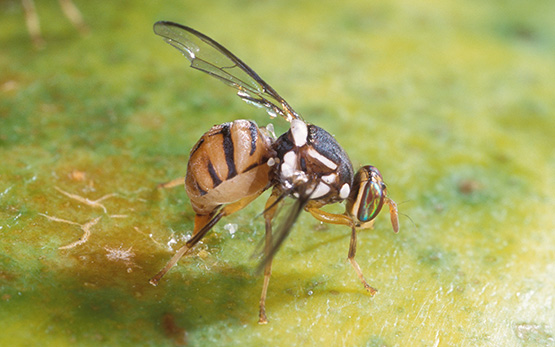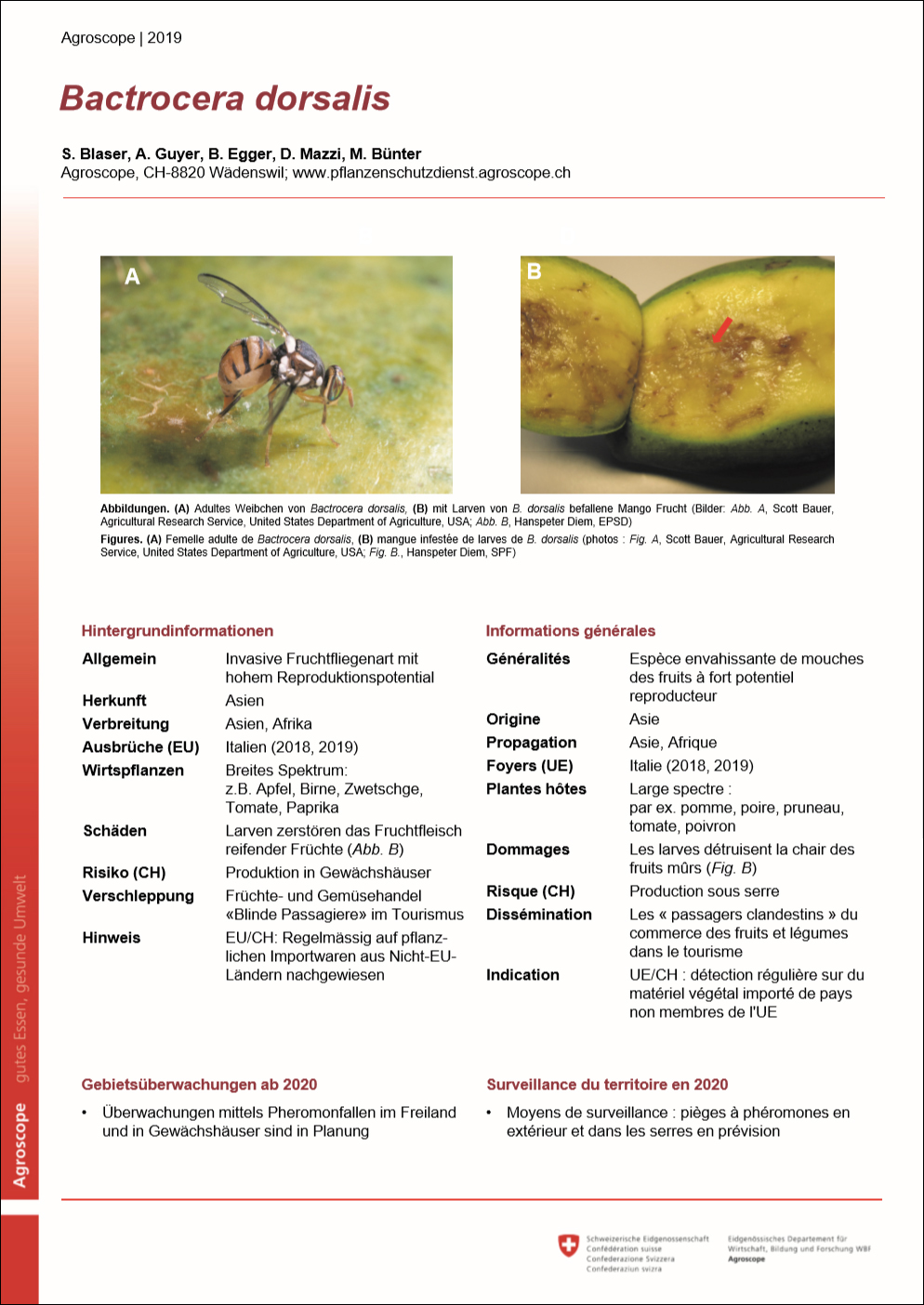
The Oriental fruit fly (Bactrocera dorsalis) originally hails from tropical regions in Southeast Asia. The fruit fly species was described in Kenya for the first time in 2003, since when it has spread to nearly all sub-Saharan African countries. The host range of the oriental fruit fly is very broad, encompassing fruit and vegetable species that are also endemic to Switzerland such as apple, plum, aubergine, capsicum and tomato. Oviposition in fruit and soft plant tissue, feeding damage to fruit and vegetables from the larvae and rot from secondary-invasive microorganisms such as fungi and bacteria in the parts of the plant damaged by the fruit fly are just some of the damage caused by B. dorsalis. Primarily introduced through trade in infested fruit and vegetables, the Oriental fruit fly is also regularly identified in Switzerland on third-country plant imports, e.g. mango or capsicum. Regulated as a priority quarantine organism in Switzerland and the EU, B. dorsalis is therefore subject to a ‘notification and control’ obligation.
Notification of suspected infestation
Publications
Further Information







